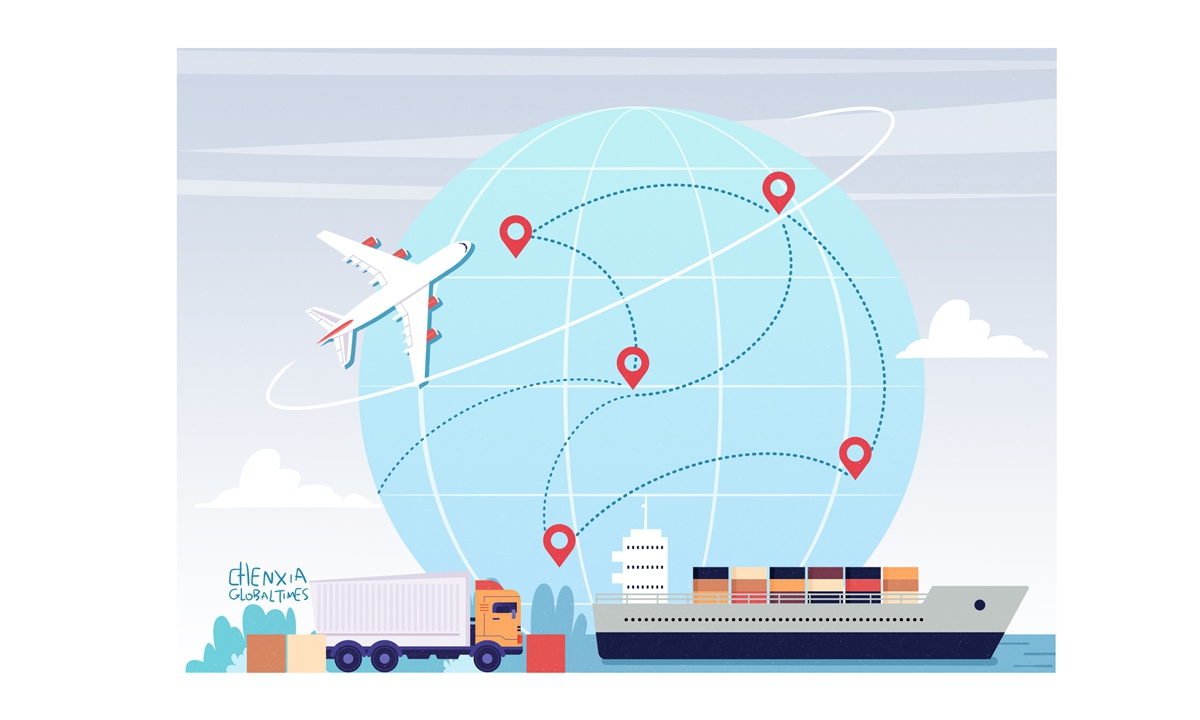CAFTA 3.0 set to inject crucial certainty into regional economy, help stabilize global trade

Illustration: Chen Xia/GT
As Chinese and ASEAN leaders gather at this year's ASEAN summit this week, a planned upgrade of the China-ASEAN Free Trade Area (CAFTA) has come into the spotlight.
Chinese Premier Li Qiang said on Sunday that China is ready to work with Singapore and other members of ASEAN to make the CAFTA 3.0 a success and jointly achieve greater development, the Xinhua News Agency reported.
This upcoming upgrade comes at a crucial juncture of global supply chain restructuring and intensifying geopolitical rivalries. It not only signifies a new height in China-ASEAN cooperation but also injects crucial certainty into the regional economy.
Amid rising protectionism and external pressure on countries to "choose sides," ASEAN countries are facing significant challenges, thrusting the regional economy, which is highly dependent on open international trade, into severe development uncertainty.
Economic and trade cooperation between China and ASEAN has been a valuable stabilizer for the regional economy. From 2010 to 2023, bilateral trade grew at a robust annual rate of 11.54 percent, which was approximately 3.5 percentage points higher than China's overall trade growth rate. In the first three quarters of this year, total China-ASEAN trade stood at 5.57 trillion yuan ($782 billion), up by 9.6 percent year-on-year. ASEAN remained the largest trading partner of China.
This sustained and robust growth proves that China has become an indispensable and powerful driving force for the development of ASEAN countries. For ASEAN countries, which prioritize economic development and better living standards, deepening cooperation with China has evolved from an option to an inevitable choice. Enhancing the region's internal self-development capacity through deepened cooperation and jointly building a more resilient and dynamic economic space has become the most effective way to resist external uncertainties. This is precisely the core logic behind the upgrade to CAFTA 3.0.
Looking back on the development history of the CAFTA, from the 1.0 version to the 2.0 version, each upgrade has been driven by the shared objectives of enhancing economic resilience, expanding cooperation domains, and cultivating new growth drivers, and exploring and fostering new economic growth points. Each upgrade represented the consolidation of achievements from the previous stage and a forward-looking perspective on future opportunities.
The upgrade to the 3.0 version also adheres to this principle. It features nine new aspects, covering the digital economy, the green economy and supply chain connectivity, and addressing core issues in global industrial restructuring and sustainable development. It fully covers the core issues of the current global industrial chain transformation and sustainable economic development while also incorporating emerging fields with great cooperation potential between the two sides, which perfectly aligns with economic transformation needs and demonstrates strategic foresight.
Taking the digital economy as an example, the two sides have agreed to promote the "hard connectivity" of digital infrastructure while enhancing the "soft connectivity" of systems such as electronic invoices and electronic payments. Incorporating high-level rules and provisions related to personal information protection, digital trade standards, paperless trade, and cybersecurity will enable China and ASEAN to jointly shape the development paradigm of the digital economy in the Asia-Pacific region, thus unleashing a new growth pole for regional trade and investment.
More importantly, such an upgrade is conducive to comprehensively expanding cooperation between China and ASEAN in emerging fields and new quality productive forces, promoting the in-depth integration of the industrial and supply chains of the two sides, and advancing the construction of a China-ASEAN super-sized market. This super-sized market is by no means a simple addition of trade volumes or an aggregation of investment flows. Its core essence lies in stimulating the internal development momentum of the region through in-depth rule integration and infrastructure connectivity. When this unified, efficient, and rule-transparent market is truly formed, the scale effect, innovative vitality, and risk resistance capacity will grow exponentially.
With the world economy struggling with uncertainties, China and ASEAN have chosen to upgrade their cooperation to prove that common development will not only inject greater vitality into the regional economy but also serve as an important stabilizing force for the stability and development of global trade.
Photos
Copyright © 2025 People's Daily Online. All Rights Reserved.









